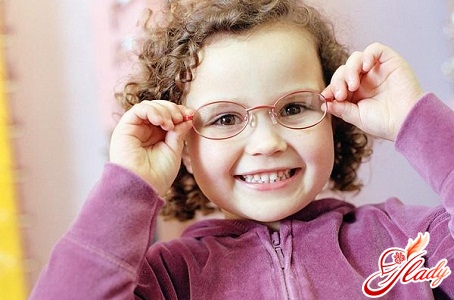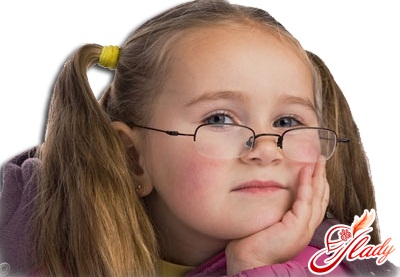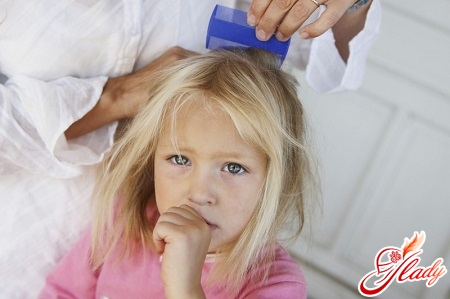 Recently, more and more often doctors -ophthalmologists have to diagnose various vision disorders. Very often, doctors diagnose strabismus in children under one year old. This is influenced by a huge number of different factors, including the environmental situation, computers and televisions, which have become an integral part of modern life, complications during pregnancy for the mother and many others. Genetic predisposition is also an important factor - vision problems often tend to be passed on from generation to generation, from children to parents. If the baby's parents have any vision problems, be it myopia, hyperopia, astigmatism or strabismus, there is a fairly serious risk that their child will also be prone to the same diseases. That is why parents with vision problems should be as attentive as possible to their baby's vision. After the baby reaches three months of age, parents should definitely visit an ophthalmologist to get the first consultation in the baby's life. Most often, the referral to an ophthalmologist is given by the pediatrician who is observing the baby. However, if for some reason the pediatrician did not give you a referral to an ophthalmologist, do not be shy and remind him about it yourself. The ophthalmologist will carefully examine your baby and conduct the necessary examination, which will help the doctor to identify possible vision disorders. In the event that the baby has any problems, the doctor will tell the parents what needs to be done next. And in the event that the child needs treatment, it is the ophthalmologist who will prescribe a treatment plan or refer the child for hospitalization in a specialized hospital. If no one in your family has had vision problems before, the baby's first visit to the ophthalmologist should be at six months. After that, if the ophthalmologist does not reveal any disorders, the following visits will take place according to plan, during the child's preventive examinations. In no case, if the doctor said that the child's vision is fine, do not ignore subsequent visits. As you know, not all vision problems are congenital - many eye diseases are acquired over time, under the influence of a huge number of adverse effects on the baby's eyes. You should also draw the attention of parents to the fact that in no case should you completely rely only on doctors. Firstly, you will not visit an ophthalmologist every week, right? And secondly, individual symptoms of some diseases can only be noticed by parents who spend almost all the time with their child. Therefore, mothers and fathers should be extremely attentive and observe the baby. Doctors - ophthalmologists, as a rule, tell parents about which aspects of children's vision need to be paid special attention to. Below we have described the main ones - read carefully and try to remember this information. So:
Recently, more and more often doctors -ophthalmologists have to diagnose various vision disorders. Very often, doctors diagnose strabismus in children under one year old. This is influenced by a huge number of different factors, including the environmental situation, computers and televisions, which have become an integral part of modern life, complications during pregnancy for the mother and many others. Genetic predisposition is also an important factor - vision problems often tend to be passed on from generation to generation, from children to parents. If the baby's parents have any vision problems, be it myopia, hyperopia, astigmatism or strabismus, there is a fairly serious risk that their child will also be prone to the same diseases. That is why parents with vision problems should be as attentive as possible to their baby's vision. After the baby reaches three months of age, parents should definitely visit an ophthalmologist to get the first consultation in the baby's life. Most often, the referral to an ophthalmologist is given by the pediatrician who is observing the baby. However, if for some reason the pediatrician did not give you a referral to an ophthalmologist, do not be shy and remind him about it yourself. The ophthalmologist will carefully examine your baby and conduct the necessary examination, which will help the doctor to identify possible vision disorders. In the event that the baby has any problems, the doctor will tell the parents what needs to be done next. And in the event that the child needs treatment, it is the ophthalmologist who will prescribe a treatment plan or refer the child for hospitalization in a specialized hospital. If no one in your family has had vision problems before, the baby's first visit to the ophthalmologist should be at six months. After that, if the ophthalmologist does not reveal any disorders, the following visits will take place according to plan, during the child's preventive examinations. In no case, if the doctor said that the child's vision is fine, do not ignore subsequent visits. As you know, not all vision problems are congenital - many eye diseases are acquired over time, under the influence of a huge number of adverse effects on the baby's eyes. You should also draw the attention of parents to the fact that in no case should you completely rely only on doctors. Firstly, you will not visit an ophthalmologist every week, right? And secondly, individual symptoms of some diseases can only be noticed by parents who spend almost all the time with their child. Therefore, mothers and fathers should be extremely attentive and observe the baby. Doctors - ophthalmologists, as a rule, tell parents about which aspects of children's vision need to be paid special attention to. Below we have described the main ones - read carefully and try to remember this information. So:
- The reaction of the baby is not light
Almost all young mothers have observed this more than oncethe following picture: the light is turned on in the child's room, and the child immediately reacts to this - turns his head away, closes his eyes and shows other signs of discontent. This is the physiological norm for this reaction. By closing his eyes, the child instinctively protects his eyes, helping them to adapt to bright light. But if the baby does not react in any way to bright light, especially to a light suddenly turned on in a dark room, parents should be wary. In this case, there are two possible acceptable explanations: either you are lucky and you are the parents of an incredibly calm child, or, which is more likely, your little one has certain vision problems. To find out if this is the case, try to casually direct a beam of light directly into the baby's eyes and hold it for 1 - 2 seconds. Never let "sun bunnies" into the baby's eyes - this can damage the retina. If in this case the baby does not react to the bright light in any way, the parents should seek help from an ophthalmologist as soon as possible and show the baby to him. The doctor will examine the baby and make an accurate diagnosis or, on the contrary, dispel your fears and concerns.
- Recognizing your toys
Pay attention to whether your baby canindependently find their toys with their eyes - rattles, balls, dolls. If the child's vision is fine, he will recognize his toys even from a distance. Moreover, the child should see them equally well with both eyes - both the right and the left. If your child is old enough, you can try to check his vision yourself - show him some object, asking him to name it. After that, move on to smaller details - for example, ask him to say what color the wheel of the car is or find out if there is a pocket on the doll's skirt. But even if the baby is not yet old enough and cannot yet maintain a dialogue, attentive parents can notice that there is something wrong with the baby's vision. For example, some parents whose children suffer from eye diseases say that a very common situation is when a child stubbornly reaches out to an object that interests him. But as soon as you give him the object, the baby throws it away and may even burst into tears. This happens because the baby is disappointed, since the object turned out to be completely different from what the baby wanted to receive. If this periodically happens to your baby, be sure to consult a doctor - an ophthalmologist.
- Narrowing the peephole
Have you noticed that sometimes, when looking at what -or objects that are at a great distance from the child, your baby begins to squint? Try asking him a few leading questions that will allow you to understand whether the child sees these objects. If the child cannot answer these questions, or complains that he sees poorly, take this into account and show the child to an ophthalmologist as soon as possible.
- Evaluation of the location of various objects
A very important factor for good vision isthe ability of a child to follow a moving object with his eyes without losing sight of it. Even very small babies demonstrate this ability by following their mother, a rattle or a mobile with their eyes. If your baby fails to do this, show him to the doctors. Please note that you need to consult not only an ophthalmologist, but also a neurologist, since the child's inability to follow objects with his eyes may also indicate the presence of disturbances in the normal functioning of the central nervous system.
- Redness of the eye, lacrimation
If the child's eyes periodically lookinflamed and red, pay attention - are the child's eyes overloaded - perhaps he spends too much time in front of the TV or computer? Or maybe he cried recently? If the eyes turn red periodically, and even without any apparent reason, this is also an alarm signal for parents - be sure to consult a doctor - an ophthalmologist, who will help to establish the cause of regular eye inflammation.
Strabismus in children
Another common diseasevisual apparatus in a child is strabismus. However, strabismus itself is extremely rarely an independent disorder. Most often, strabismus is a concomitant phenomenon of such diseases as astigmatism and hyperopia. And in especially severe cases, divergent strabismus in children is a consequence of myopia. Parents should remember that childhood strabismus is not just a cosmetic defect, but a severe disruption of the entire visual apparatus. Normally, the human visual system has a structure in which two different images from both eyes come through the visual channels to certain areas of the brain, where they are reunited into a single whole. And only with the correct, well-coordinated work of the entire visual apparatus does the picture acquire the correct clear outlines, thanks to which a person sees objects in the correct angle, and it is also possible to adequately navigate in space. A baby who has just come into our world is still, in principle, not able to look and see clear objects. The ability to see with both eyes (binocular vision) develops gradually in a child, and is finally formed only by the age of 4-5. I would like to remind you that at this age, all children are also susceptible to physiological myopia, which is directly related to the development of strabismus. Therefore, treatment should be exclusively comprehensive - only in this case is it possible to achieve positive dynamics. Most often, strabismus is diagnosed in children aged three to five years, but strabismus in infants is also quite common. As a rule, the symptoms of trouble are first noticed by parents of children who spend all their free time with their babies. Many parents ask - how to determine strabismus in a child. In fact, if strabismus does appear in a child, you will immediately notice it with the naked eye, even without special education. And if you notice that your child is squinting even a little, hurry to seek help from a pediatric ophthalmologist for a consultation as soon as possible. You should not be afraid that you will bother the doctor in vain - in the event that we are talking about the child's health, it is much better to be on the safe side than to miss the onset of some disease. No doctor will refuse to help you, and will not blame you. After all, only an ophthalmologist knows how to treat strabismus in children. Correction of strabismus in children is a labor-intensive process and requires a lot of effort, both from the doctor and from the parents.
Treatment of strabismus
Treatment of strabismus in children should becomprehensive and started in a timely manner. Firstly, it is very important to start treating the underlying disease – myopia, hyperopia or astigmatism. It is very important to choose the right glasses for the child – this should also be done by an ophthalmologist, but not by employees of optics salons. Often, correctly chosen glasses can significantly reduce the degree of strabismus, reducing it to almost zero. However, such treatment is often not enough. In such cases, ophthalmologists carry out complex hardware treatment for children. The treatment program for each child is selected exclusively individually, taking into account the peculiarities of each child’s vision. In some cases, if the doctor considers it necessary and sees compelling indications for this, he will place the child in the ophthalmology department of the hospital for subsequent surgical intervention. The purpose of this operation is to correct the eye muscles, as a result of which strabismus is almost completely cured. After the doctors restore normal correct movement of the eyeball with the help of surgical intervention, the child will receive complex conservative treatment for a certain period of time. With the help of this treatment, doctors achieve almost complete rehabilitation of the child's visual function. Also, with the help of certain training methods, doctors fully restore the child's ability to stereoscopic vision. And once again I would like to remind you that strabismus in children has a variety of causes - so it is very important to establish the true one. Below we have described the most common of them in general terms, but remember that in no case should you try to make diagnoses yourself - this can lead to the most unpredictable consequences. The information in this article is provided only for a general introduction to parents and cannot be used as a guide to self-treatment.
Myopia in children
One of the most common violationsvision in children is myopia. Most often, this disease is directly related to the presence of televisions, computers and interactive learning technologies in a person's life. Most often, it is during the period of development of the baby's visual system that it is subjected to an unbearable load. And, as a result, pathological disorders occur in the child's eyes. Which, in turn, lead to the development of myopia. Many parents underestimate the real danger of uncontrolled sitting at the computer and watching TV by the baby. In order to understand this, you just need to clearly imagine what exactly happens to the child's vision while watching TV. When a baby looks at a monitor or TV screen, the image is projected directly onto the retina of the child's eye. According to natural physiology, all young children most often have farsightedness. With farsightedness, in order to see an object (in this case, an image) located at a distance, the child is forced to strain his eyes a lot. If a child spends too much time in front of the TV, the so-called elongation of the eye occurs and, as a result, myopia develops. Congenital myopia in children is slightly less common. Treatment of myopia should begin as soon as possible. And treatment, to achieve visible success, must necessarily be comprehensive. Treatment of myopia in children in most cases is conservative and includes the following components:
- Classes with the child on special simulators, the action of which is aimed at strengthening the muscles of the visual apparatus. These sessions should be conducted under the strict supervision of an ophthalmologist.
- Pharmacological pharmacological preparations,strengthening the eyes of the baby. Remember that an incorrectly selected drug will only worsen the child's vision, so all drugs should be selected and prescribed by a doctor.
- Wearing glasses. Points are also selected strictly by the doctor, taking into account the individual characteristics of each particular baby. In the event that the nearsightedness of the child is not very pronounced - the glasses should be worn only in certain cases. If the disease progresses and takes severe forms, the constant wearing of glasses is simply mandatory. However, eyeglasses themselves do not cure the disease, but only correct vision, playing a passive auxiliary role.
In the same case, if the above methodsconservative treatment does not bring the desired success and the child's vision continues to decline inexorably, the doctor may decide to perform surgery. Such an operation is called scleroplasty and is aimed at increasing the nutrition of the eyeball. However, this operation, unfortunately, is also not a panacea and does not remove the subsequent need for conservative treatment of childhood myopia. As a rule, if myopia in children, treatment brings good results.
Myths about myopia
Unfortunately, there is a tendency among parentsThere are a huge number of myths and misconceptions regarding childhood myopia, especially regarding how to treat myopia in children. They often prevent parents from adequately assessing the situation and seeking medical help in time. In some cases, these myths add dark tones and pessimism to the view of this problem.
- Treatment of myopia with eye drops
Very often, parents, having learned that their babysuffers from myopia, feverishly and fanatically begin to buy up all possible eye drops, mistakenly believing that they will improve the child's vision. In fact, this is not the case at all - the drops only bring temporary improvement, but do not cure the disease.
- Points for Life
Many parents are confident that once they put onglasses, the child will be forced to wear them all his life. However, this is not true - glasses do not cure or worsen vision, but only correct it. And if vision is not critically reduced, and the baby is able to do without glasses, you should not force him to wear them. Parents of very young children should be especially careful with glasses - after all, no matter how you look at it, the lenses are made of glass. And babies are very inquisitive and restless - there is always a risk that the baby can break the glasses and get hurt by the glass. Therefore, if myopia in children under one or two years old, there can be no talk of any glasses.
- Blueberries
It is widely believed that blueberries andPreparations containing blueberry extract can work wonders and improve a child's vision many times over. However, all preparations with blueberries are a double-edged sword. On the one hand, they are approved for sale by the Ministry of Health, but on the other hand, they are not multivitamin complexes, but only food supplements. Doctors, as a rule, are very skeptical about these preparations, giving their preference to multivitamin complexes. Before buying any preparation for a child, be sure to consult with your doctor - an ophthalmologist.
Timely treatment and prevention of myopia
For some reason, there is an opinion among parents,that myopia in young children does not need to be treated, it will go away on its own over time. This is one of the most serious mistakes that will certainly affect the baby's vision for life. Farsightedness is a physiological phenomenon in young children. But myopia must be treated as early as possible. If the disease is left without due attention, myopia will progress and can lead to irreversible pathological changes in the fundus. Timely prevention of myopia development plays an invaluable role. Of course, first of all, this concerns children who do not yet have any vision problems, but these measures are an integral part of the course of treatment for myopia in children who are already sick. Failure to comply with them worsens the course of the disease and reduces the effectiveness of treatment. Strictly dose the time and intensity of the load on the eyes. In no case allow the visual system to be overloaded - this has a very adverse effect on the child's vision. For example, watching TV - it is not recommended for children under two years old to watch it at all, doctors allow children from two to four years old to spend no more than twenty minutes a day in front of the screen, dividing this time into two viewings. Do not treat this warning with negligence - it was not invented by doctors. In addition to the fact that the dynamic image on the screen loads the baby's visual system, it also irritates his nervous system. Often, a child who spends a long time in front of the TV watching cartoons is often capricious, sleeps poorly at night. But parents simply do not associate this phenomenon with sitting in front of the TV for a long time.
Hyperopia in children
Farsightedness is common in young childrenis quite common and in most cases is a physiological norm of development of the visual system. Farsightedness in children under one year is diagnosed in 7 out of ten children. The reason for farsightedness is that the eyeball is shorter than necessary. As a result, the refraction of rays occurs behind the retina, so the image at the bottom of the eyeball is blurry. By the way, all newborn babies without exception exhibit physiological farsightedness. If physiological farsightedness is diagnosed in children, treatment is not necessary. However, as the baby grows, farsightedness disappears without any outside intervention. This happens almost always. However, in rare cases, farsightedness does not disappear as the baby grows, but only intensifies. In especially severe cases, strabismus may even develop. However, only an ophthalmologist can make a decision on treating farsightedness in a child. However, only a doctor and no one else can make a diagnosis. The causes of farsightedness in children can be very different. If the doctor has decided that the child's hyperopia is beyond the physiological norm, he or she may prescribe a certain treatment for the child. As a rule, these are various exercises to strengthen the eye muscles, hardware treatment, which in all cases is selected for each child individually. In addition, in particularly severe cases, the child may be prescribed glasses for the duration of treatment, which will relieve excessive strain on the eyes caused by the child's need to strain their eyes to see something. Also, parents should not forget about preventive measures aimed at preventing the occurrence of hyperopia. To do this, it is necessary to follow all the measures mentioned above. They are true not only for myopia, but also for hyperopia. It is also very important to regularly undergo preventive examinations with an ophthalmologist - children often do not realize that their vision has deteriorated and, accordingly, cannot complain about it to their parents.
Children's astigmatism
Sometimes babies have this disorder,as childhood astigmatism. Astigmatism is a consequence of a congenital disorder in the structure and development of the child's visual apparatus. With astigmatism, the baby's eye has two optical foci at the same time, instead of the one required. And very often, neither of the two foci is where it should be initially. The severity of this disease depends on where the optical foci are located. It can be simple, complex or mixed astigmatism. An experienced ophthalmologist can easily determine whether a child has astigmatism and its degree. The child's further treatment tactics will be determined by the degree and type of the disease. Modern treatment of childhood astigmatism is mostly conservative and aimed at training the necessary areas of the eyeball. In addition, the ophthalmologist usually recommends that the child wear glasses specially selected for him. The child must be under constant medical supervision during the entire treatment period. As a rule, a child must undergo about three courses of treatment per year. To successfully achieve positive dynamics, it is necessary to start treatment as soon as possible. The sooner the child begins to receive the necessary treatment, the greater the chance that the baby's impaired visual functions will be fully restored. However, remember that, alas, it is simply impossible to completely cure astigmatism, because it is a congenital disorder of the visual apparatus. The only way to completely get rid of astigmatism is to perform laser vision correction. However, remember that this operation is not performed on children under 10 years of age. Therefore, if your baby is younger, the doctor will conduct conservative treatment, which, if it does not bring improvement, then at least will not allow the disease to progress until laser vision correction is possible. Of course, vision problems in children cannot but upset and frighten all parents without exception. However, in no case should you despair, and especially give up. Modern medicine does not stand still, but is rapidly developing. And those eye diseases in children that were previously not treated, but only corrected with glasses, are now successfully cured to the fullest extent. And the most important thing depends on the parents - timely visit to the doctor. And your baby will delight you with his shiny and healthy eyes. We advise you to read:









